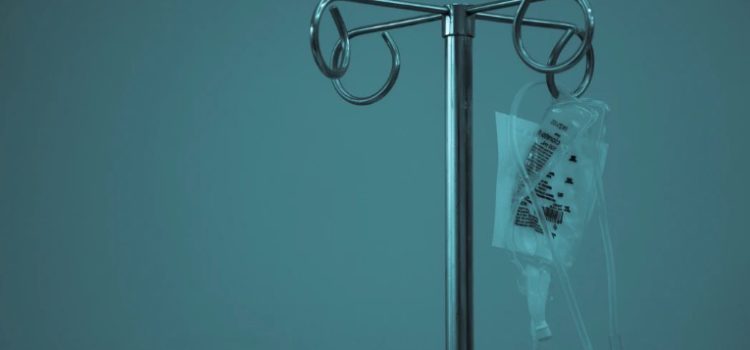

This article is an excerpt from the Shortform summary of "The Checklist Manifesto" by Atul Gawande. Shortform has the world's best summaries of books you should be reading.
Like this article? Sign up for a free trial here .
Is there enough communication in medicine? Can a checklist help doctors, nurses, and specialists better work together to keep patients safe?
We’ll cover how the humble checklist can improve communication in medicine and dramatically impact patients.
Communication in Medicine: University of Toronto
The University of Toronto performed a feasibilty study using a 21-item surgical checklist designed to catch a range of potential errors in surgical care. It combined task checks with communication points to improve communication in medicine.
The surgical staff had to verbally confirm each item on the list — for instance, that an antibiotic had been given, that the right type of blood was available, and that test results were on hand. The checklist also incorporated a team briefing to talk about any risks or concerns as well as expectations (for example, how much blood loss was expected and what things to be prepared for).
Researchers monitored use of the checklist in eighteen operations. In ten, it revealed significant problems or ambiguities, including individual patient problems that a checklist wouldn’t typically catch.
This demonstrates the importance of communication in medicine.
Communication in Medicine: Kaiser Hospitals
A study at a group of Kaiser hospitals in southern California further underscored the importance of communication in medicine and a sense of teamwork in surgery. The hospitals tested a thirty-item “surgery preflight checklist.”
The checklist included preventive steps for surgery’s three biggest killers — infection, bleeding, and unsafe anesthesia. However, a fourth killer — the unexpected — can’t be dealt with as readily with checkboxes. So the program addressed it by setting up communication checkpoints. The checklist required surgical staff to stop and talk through the case together in order to be ready as a team to identify and address each patient’s unique concerns and risks.
This was unusual because, typically, surgery is treated as a one-person show. The operating room is referred to as a theater and functions as the surgeon’s stage. Surgeons like to think that surgical staff perform as a team, but often they really don’t. For instance, not all team members are aware of a given patient’s risks, problems they need to be ready for, or even why the surgeon is doing the operation. One survey of 300 staff members leaving the OR showed that one in eight weren’t sure where the incision would be until the operation started. This one-person-show approach makes it more difficult for staff to come together effectively in a crisis. This is why communication in medicine is important.
Checklists requiring communication also address another problem with surgery — “silent disengagement.” This is the tendency of each person to focus on a specialized task, sticking to their own area of expertise while not questioning what anyone else is doing or paying attention to the big picture. To avoid failures in surgery, staff members need to see their job not just as performing specialized tasks, but also as helping the group get the best possible results. This requires working as a team to address problems that arise and to ensure nothing falls through the cracks.
Kaiser’s checklist insisted that people talk together, which fostered teamwork. It also required staff members to introduce themselves with their name and role, ensuring all team members knew each other’s names. Studies in various fields have shown that people who don’t know each other’s names don’t work as well together as those who do.
Further, research at Johns Hopkins showed that when nurses were given a chance at the beginning of a procedure to state their names and concerns, they were more likely to note problems during surgery and offer solutions. The researchers referred to this as the “activation phenomenon” because giving people a chance to speak early on activated a sense of responsibility and willingness to speak up.
Results of Communication in Medicine
Kaiser hospitals tested the checklist for six months in 3,500 operations. It caught numerous near errors, including almost doing the wrong procedure in one case. In addition, the rating by surgical staff of the teamwork climate improved from good to outstanding. Communication in medicine increased. Employee satisfaction rose and OR nurse turnover dropped.
None of these studies were proof that a checklist could be devised that would be effective and versatile enough to improve surgery outcomes around the world, but they provided a starting point for further exploration. Gawande and his team began drafting a potential surgical checklist, but soon realized they needed more information on what makes an effective checklist.
Researchers suggested the results were due to improved communication. In spot surveys, surgical staff reported a significant increase in the level of communication. There also was a correlation between teamwork scores and results for patients — the more that teamwork improved, the more patient complications declined.
Inspiration From Building Construction
The submittal schedule on a construction site operates on the assumption that if you get the right people talking to each other, problems can be averted or addressed. To deal with the unexpected, the builders relied on communication and group knowledge, rather than the expertise of an individual. This inspired the use of checklists to improve communication in medicine.
Success Built on Communication
The reason for the construction industry’s emphasis on communication is that failure to communicate is the most common reason for major building errors.
For example, there was a serious communication oversight in the construction of the Citicorp building, now called The Citigroup Center, in Manhattan. It features an unusual design — a slanted top and a nine-story stilt-style base. During its construction in the 1970s, the welding contractor building the base changed specifications without consulting the architects — the contractor switched from making welded joints to less-strong bolted joints, which could have failed and caused the building to collapse in 75 mile-per-hour winds.
The architect discovered the change in 1978, a year after the building opened, when he reviewed the plans in response to a question from a Princeton engineering student. He informed the building’s owners and not long afterward, Hurricane Ella began moving up the coast toward the city. An emergency crew worked secretly at night to weld two-inch-thick steel plates around two hundred bolts to successfully secure the building. This teamwork can teach us a lot about communication in medicine.
While the construction industry’s checklist process hasn’t been perfect, it’s been amazingly successful. Building failures are extremely unusual. And although buildings are more complex than ever, and are built to higher standards for such things as earthquakes and energy efficiency, they take a third less time to build.
———End of Preview———

Like what you just read? Read the rest of the world's best summary of "The Checklist Manifesto" at Shortform . Learn the book's critical concepts in 20 minutes or less .
Here's what you'll find in our full The Checklist Manifesto summary :
- How checklists save millions of lives in healthcare and flights
- The two types of checklists that matter
- How to create your own revolutionary checklist






